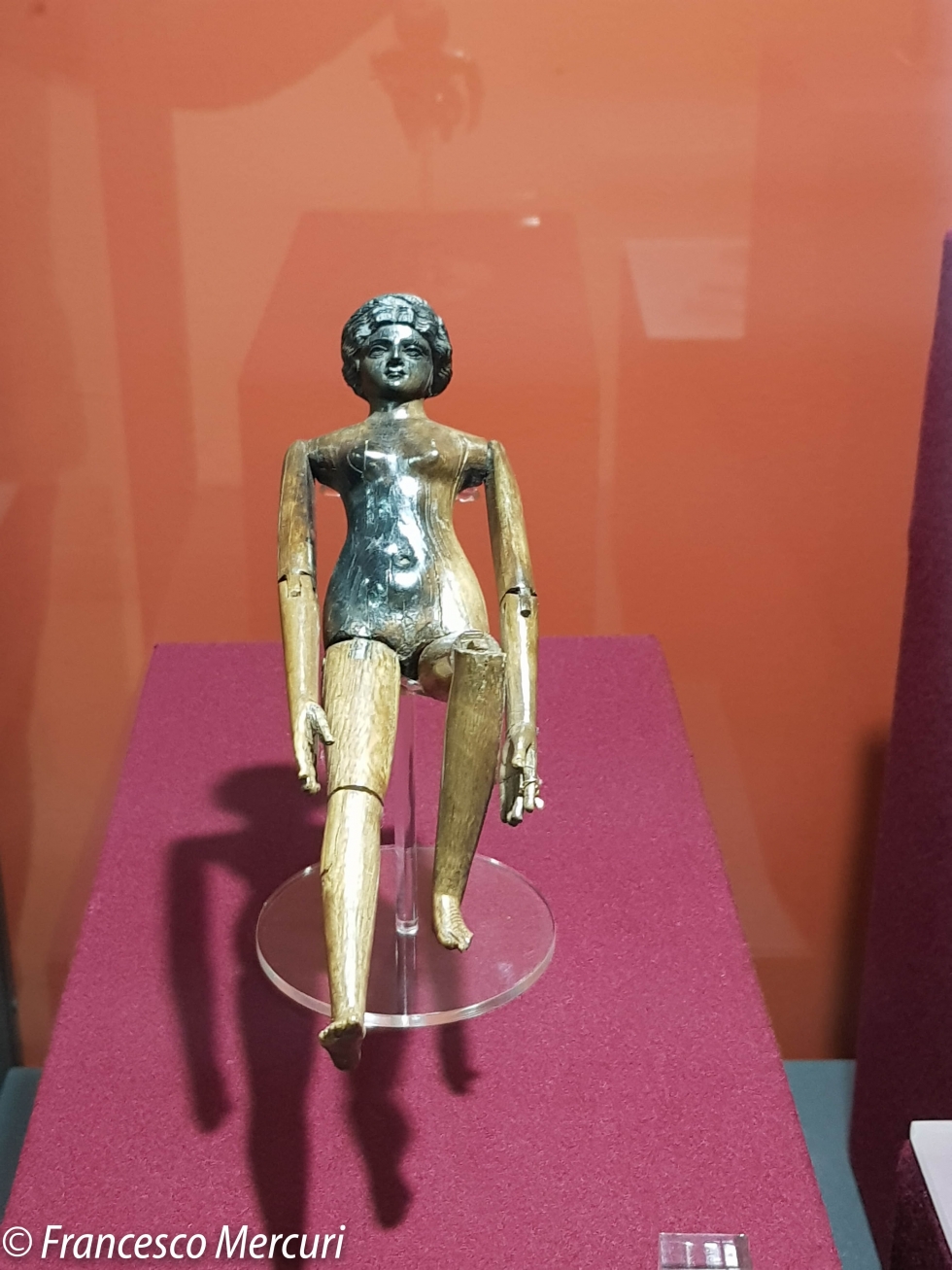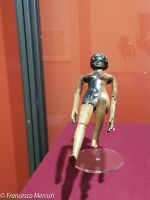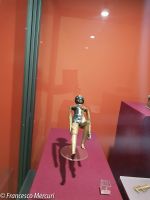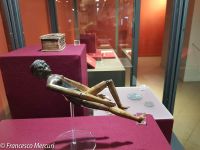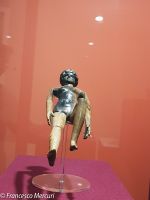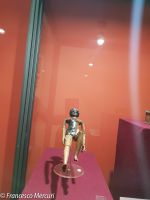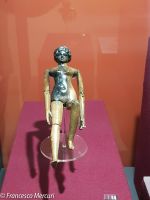This splendid marble sarcophagus came back to light during the construction excavations for the Palace of Justice in 1889. The sarcophagus was full of water even though perfectly sealed but the girl’s grave goods eventually survived almost intact. The “Crepereia” is a 23-centimetre ivory Barbie doll. The ivory got darkened by the water; that’s why if you look at her today you may mistake her for a wooden doll. Apart from that, her conditions are excellent. The head and torso are carved in one piece while the limbs are designed so that they can only move in the proper anatomical way. Probably the doll was initially dressed as we deduce from her tiny dowry - a gold ring, earrings and necklace -. That’s why, as a trick to make the figure harmonic, the limbs look disproportional to her torso. The pensive gaze, straight nose and all the other minute details make her “alive” while her original head of hair helps us dating her. In fact, her hairstyle was typical of the last decade of Antoninus Pius’ Age. But why bury a doll in a woman’s sarcophagus? It seems that just before their marriage Roman girls used to offer Venus their toys, symbolically giving up their age of innocence. In all probability Crepereia Tryphaena died around her wedding day. In fact, among the jewels found in her grave goods there were two rings that the girl was wearing on her left hand: on the carnelian (a brownish-red gemstone) set in the first we can see two hands holding two ears of corn (typically found on Roman wedding rings) while on the second there is a cameo with the name “Filetus” carved on it, supposedly being the name of his groom.This story fascinated the Italian poet Giovanni Pascoli so much that in 1893 he wrote a Latin poem dedicated to the two lovers.
Giuseppe Rosselli




